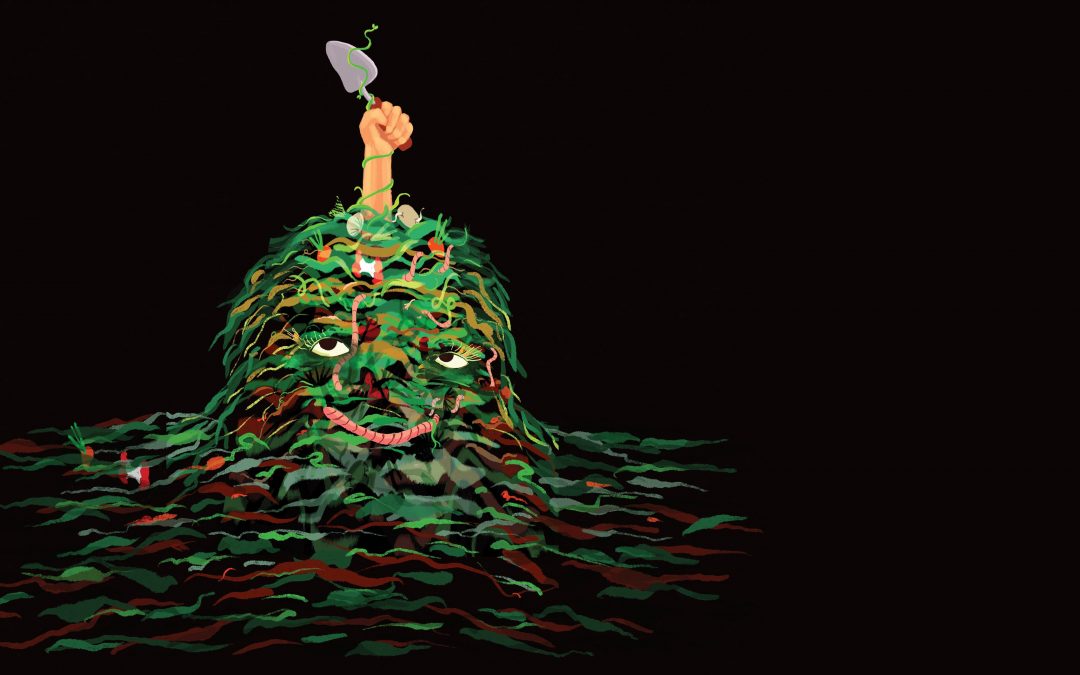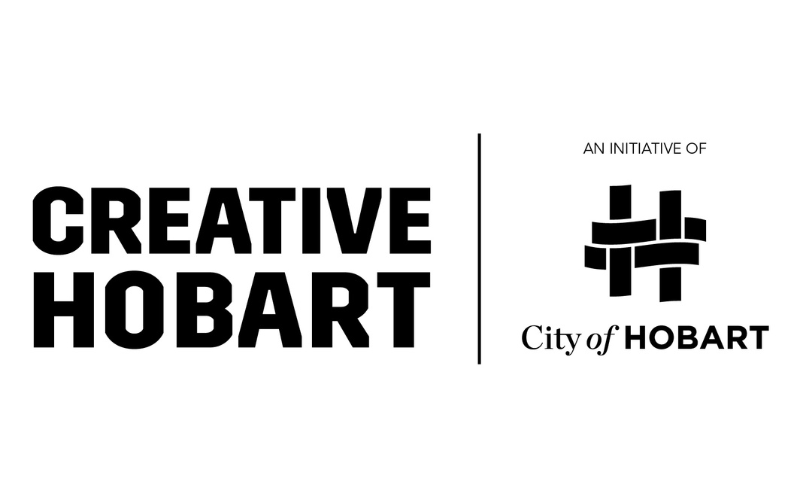A compost heap called Heap with head of workshop/lead puppet-maker Bryony Anderson
It’s two weeks out from the debut of our new character, Heap. It’s a giant compost heap that rises up and comes to life, and in the process of making her I’ve become an avid fan of vegetable scraps. All those oranges, pinks and greens! All those intricate textures! Measuring the nub ends of carrots and squinting at strawberries, I’ve become grateful that food is so gorgeous.
Heap has pulled together lessons from many previous designs. She’s constructed almost entirely from salvaged materials: orchard netting, trampoline fabric, old tents, irrigation pipe and packing foam. It seems only fitting to work this way when we’re celebrating the marvel of new life springing from decay.
The central structure is built from home grown bamboo, and extends a technique I’ve been developing. Bamboo has fantastic structural qualities – it has perfect memory, and is very strong for its weight but also just flexible enough to cope with strain. But it’s weakened by holes and hardware, so instead this structure is lashed with sailmaker’s twine and then layered with papier mache to make it lightweight but strong.
When you’re making hundreds of objects and then asking a puppeteer to lug them around, every gram counts. So we used a lot of fabric from old tents, light and luminous and strong, and even avoided heavy paint in favour of ink washes. We’ve developed a way of rubbing inks into fabric that means none of it goes down the drain, and delivers lots of happy accidents – textures and patterns you could never intentionally manufacture.
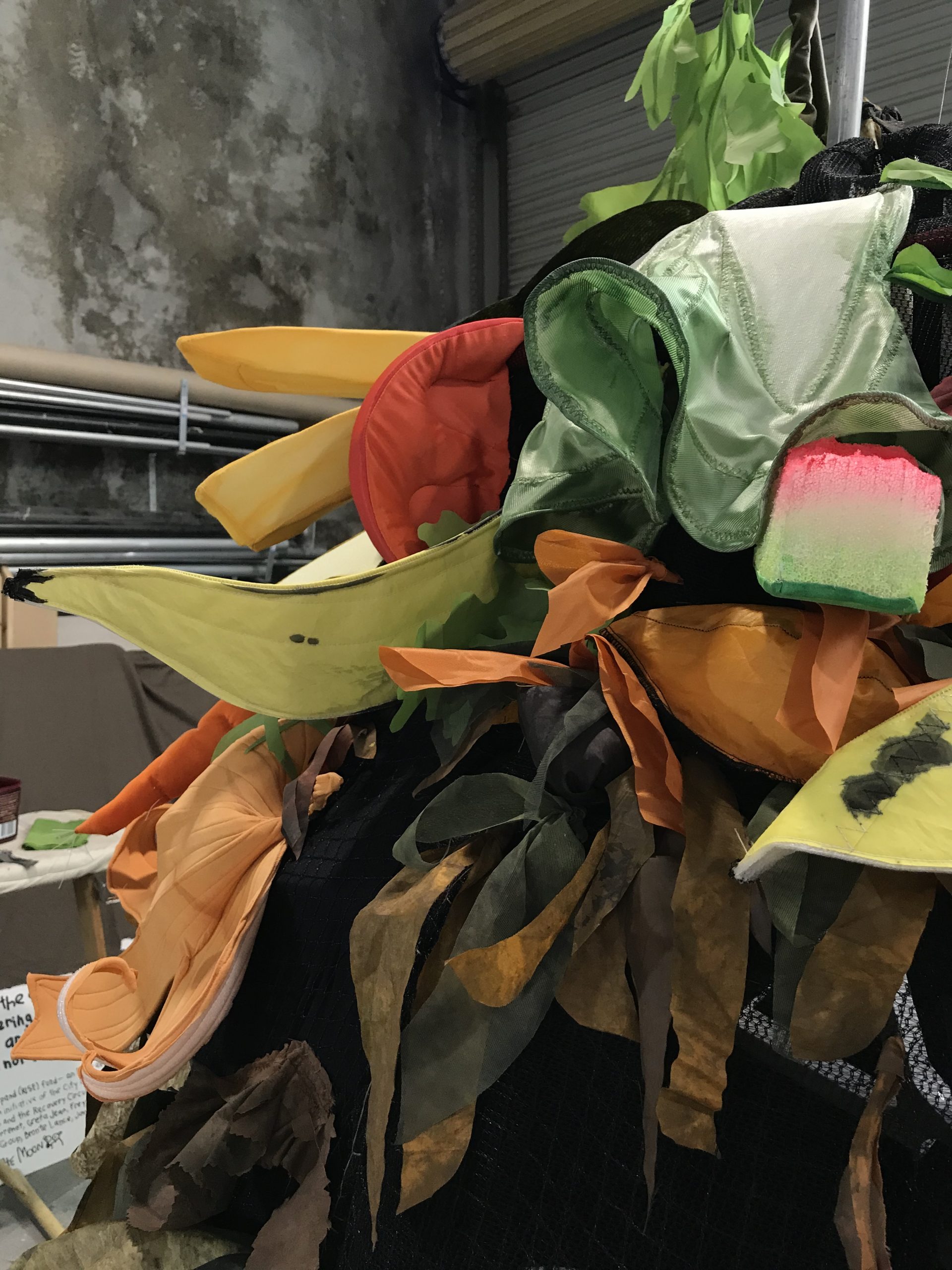
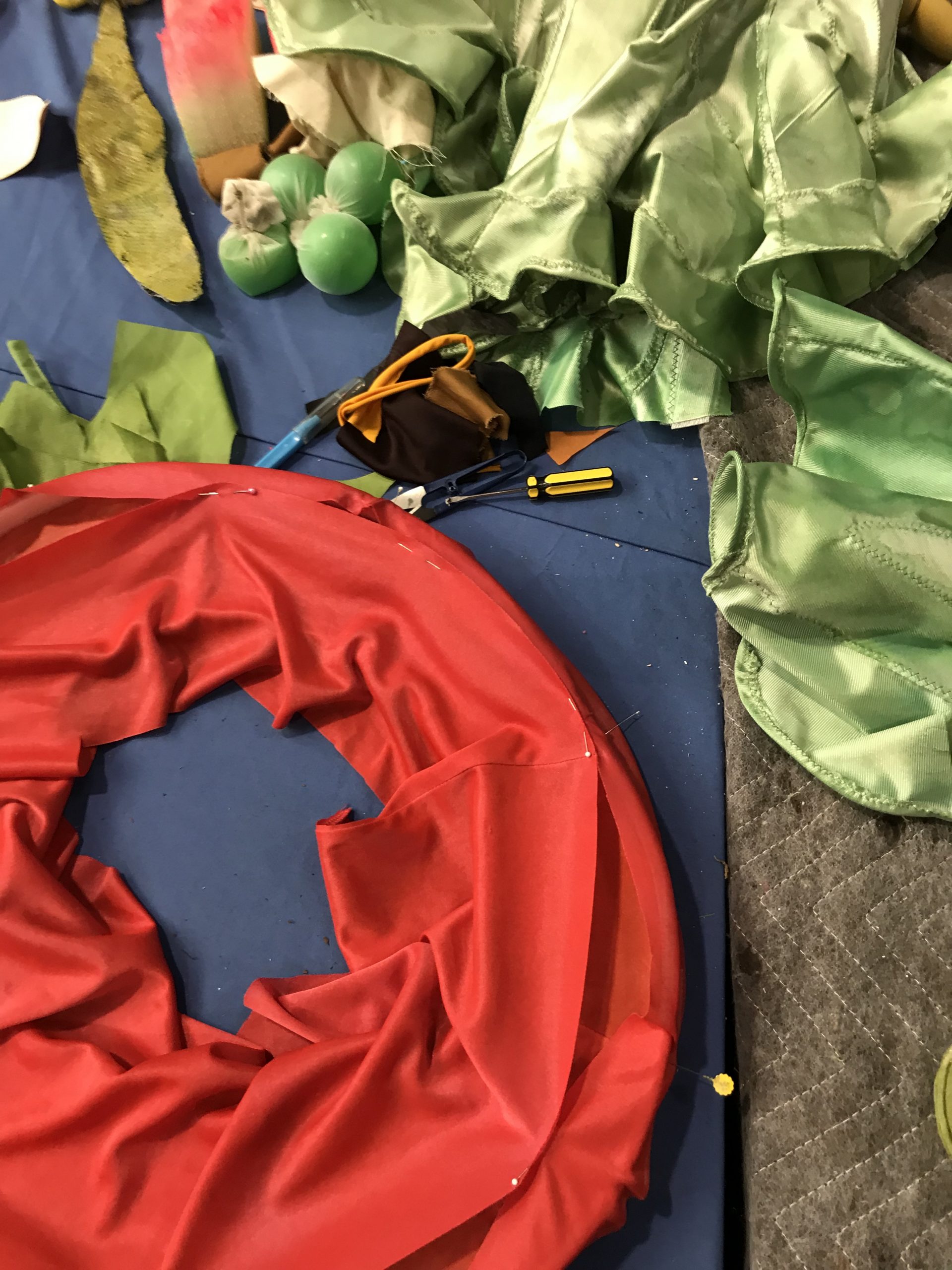

We took the original idea to a brains trust at Moonah Primary School. The students of 4/5 Wade, together with 24 Carrot Garden’s Queen of Compost Kristina MacCarthy, forked through the school’s heaps with us to figure out what makes compost tick. I also brought food scraps from home, and the difference between good compost and bad became clear: loamy, chocolatey soil versus pungent, matted slime. The key, we learned, was plenty of dry material and aeration. That lesson has made its way into the final Heap. In fact, that might become our attendant Gardener’s mission: to ease the indigestion of a Heap that’s too heavy on the wet stuff.
Looking back on the original drawings, I’m amazed at how a short session with the students of Moonah Primary helped to loosen the concept. The character was originally a sort of Carmen Miranda of rotting vegetables, hysterical and flashy with power shoulders and a waspish waist. Since working with the kids, she’s become more naive and gentle, and her face has changed to reflect one kid’s triumphant discovery in the compost pile: a sprouty potato with eyes. It’s been an important reminder that even when you imagine things for a living, there is nothing as fresh as a child’s perspective.
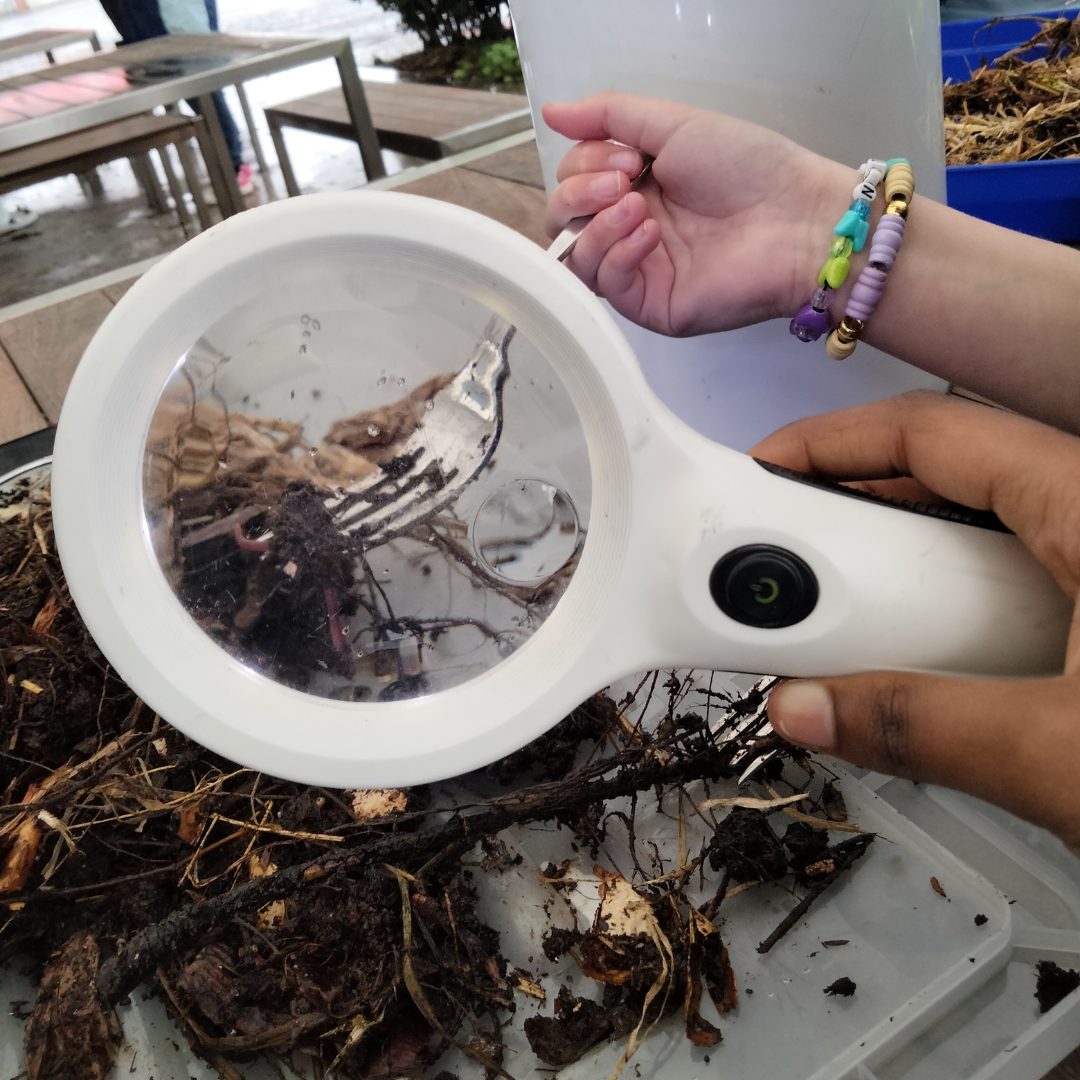
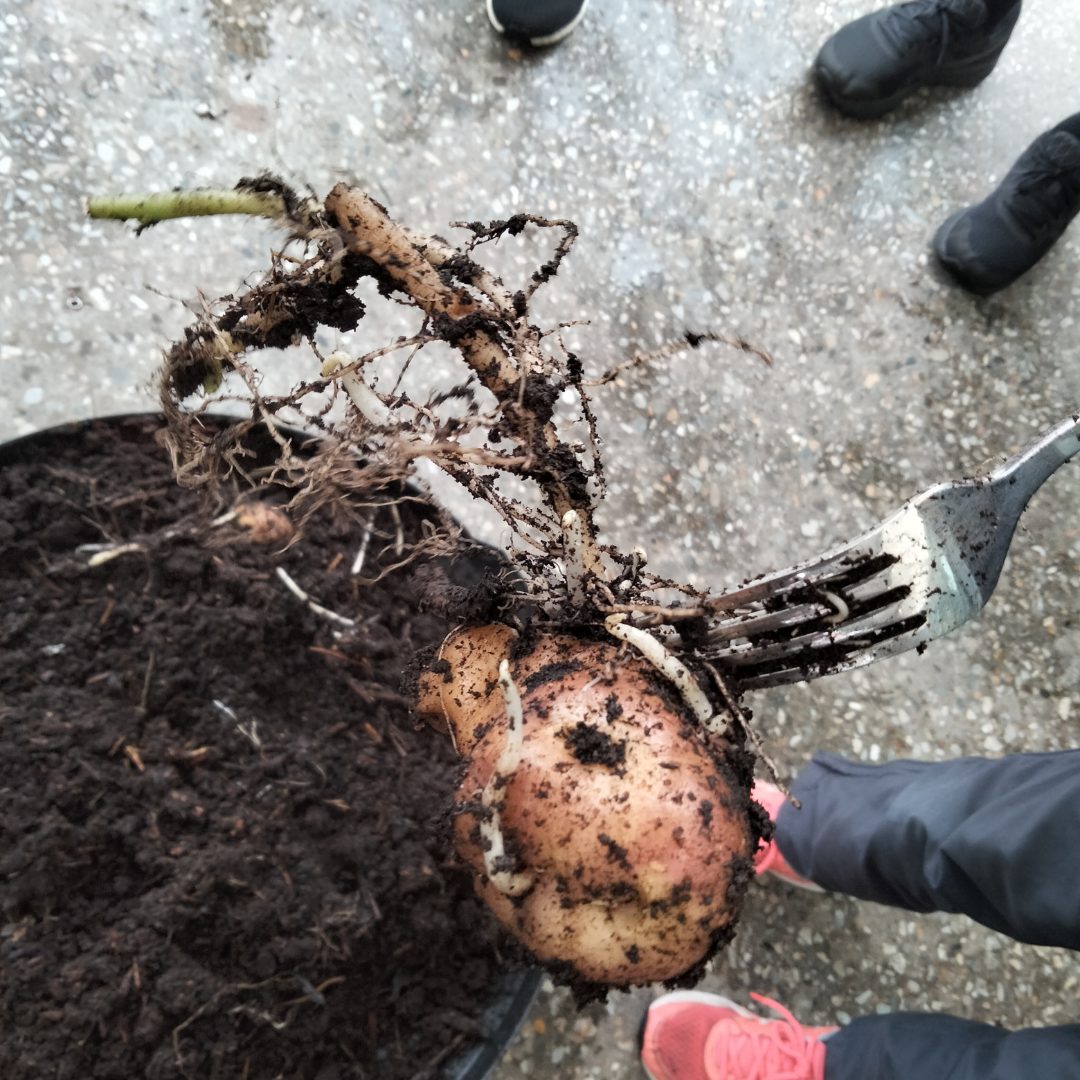
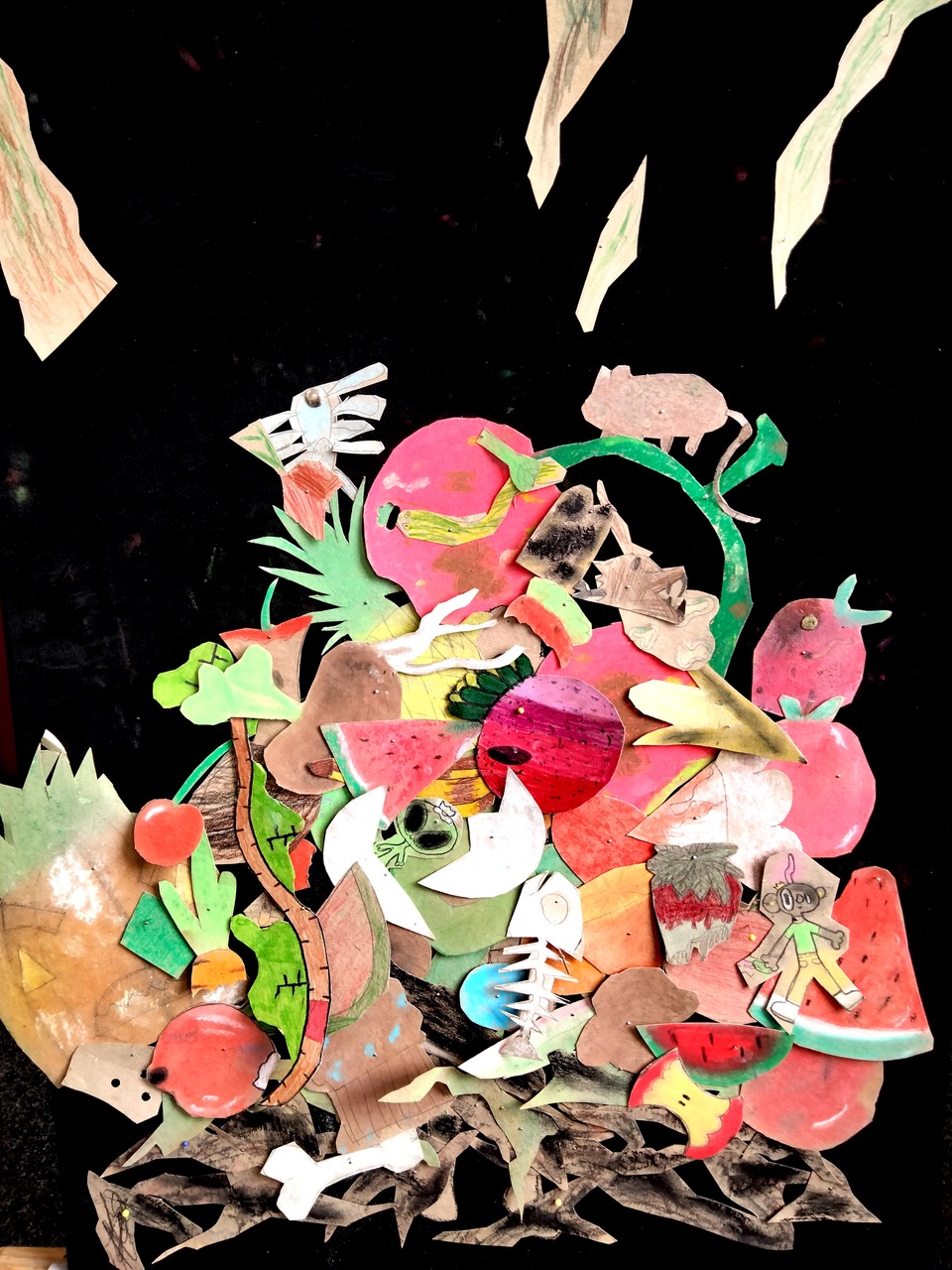
Kilometres of hand stitching later, I’m really looking forward to seeing how the next chapter unfolds. Just as inviting kids into the process brought fresh ideas, handing over a new puppet to performers adds another dimension. And then, when it finally emerges into the world, the reactions of an audience feed the performance and give it life. We won’t really know what spirit our Heap has until we see how people react.
SUPPORTED BY
WANT MORE?
Subscribe to receive our monthly email newsletter – it includes what’s on, stories, behind the scenes, videos and more.

